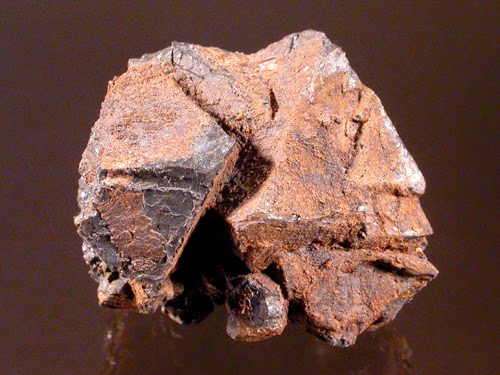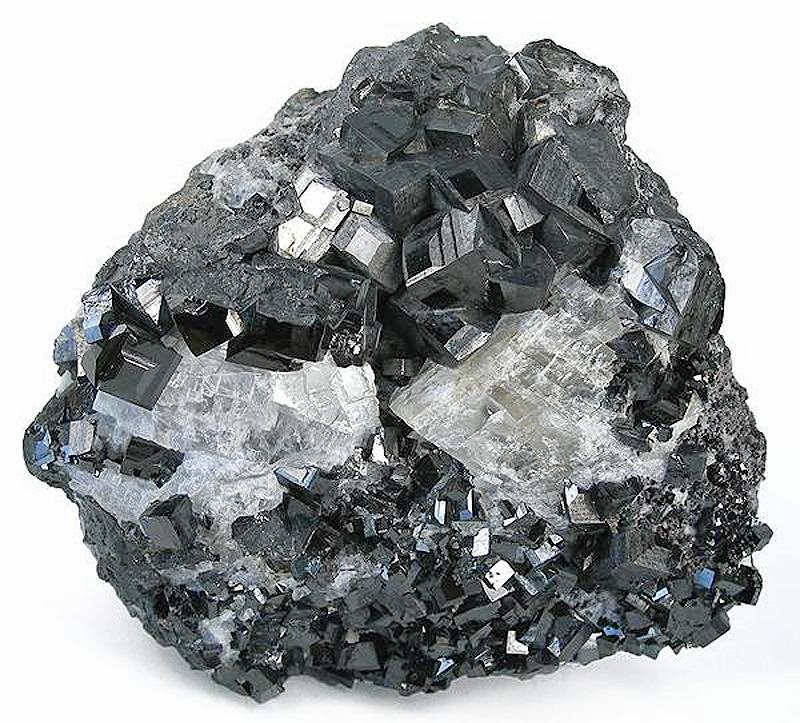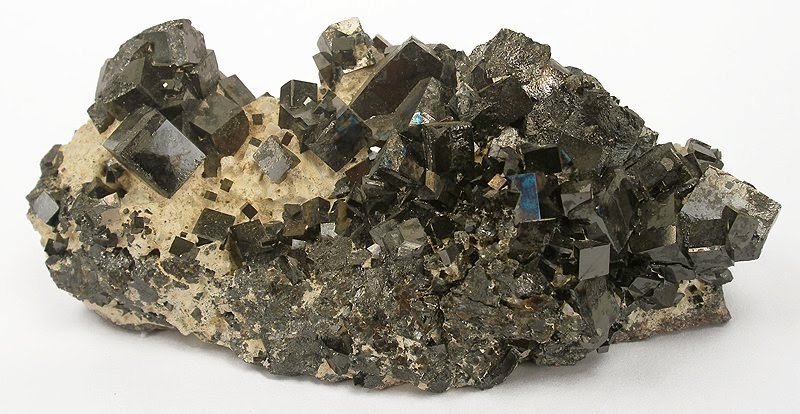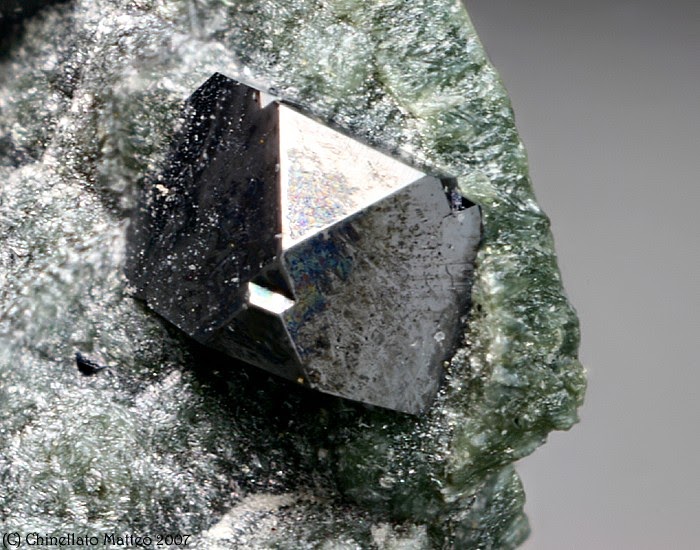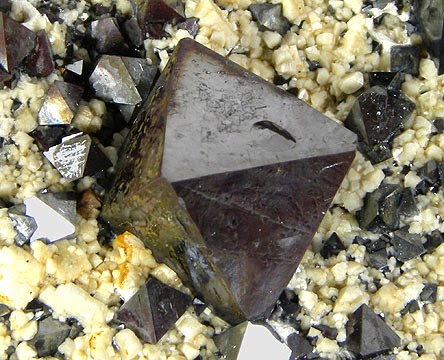
Chemical Formula: Fe2+Fe3+2O4
Locality: Many localities and environments world wide.
Name Origin: Named for Magnes, a Geek shepherd, who discovered the mineral on Mt, Ida, He noted that the nails of his shoe and the iron ferrule of his staff clung to a rock.
Magnetite is a mineral, one of the three common naturally occurring iron oxides (chemical formula Fe3O4) and a member of the spinel group. Magnetite is the most magnetic of all the naturally occurring minerals on Earth. Naturally magnetized pieces of magnetite, called lodestone, will attract small pieces of iron, and this was how ancient people first noticed the property of magnetism.
Small grains of magnetite occur in almost all igneous and metamorphic rocks. Magnetite is black or brownish-black with a metallic luster, has a Mohs hardness of 5–6 and a black streak.
The chemical IUPAC name is iron(II,III) oxide and the common chemical name is ferrous-ferric oxide.
History
Discovery date : 1845
Town of Origin : MAGNESIA, THESSALIE
Country of Origin : GRECE
Optical properties
Optical and misc. Properties : Opaque
Reflective Power : ~21%
Physical Properties
Cleavage: None
Color: Grayish black, Iron black.
Density: 5.1 – 5.2, Average = 5.15
Diaphaneity: Opaque
Fracture: Sub Conchoidal – Fractures developed in brittle materials characterized by semi-curving surfaces.
Hardness: 5.5-6 – Knife Blade-Orthoclase
Luminescence: Non-fluorescent.
Luster: Metallic
Magnetism: Naturally strong
Streak: black
Photos :
